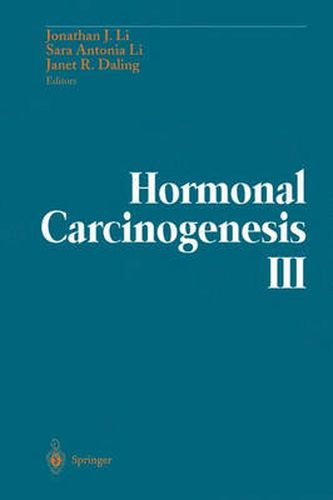Readings Newsletter
Become a Readings Member to make your shopping experience even easier.
Sign in or sign up for free!
You’re not far away from qualifying for FREE standard shipping within Australia
You’ve qualified for FREE standard shipping within Australia
The cart is loading…






Since our previous symposium in 1995, the pace of research in hormones and cancer has accelerated. Progress in our understanding of hormonal carcinogenic processes has been a direct result of the advances made in cell biology, endocrinology, and carcinogenesis at the molecular level. The newer fields of molecular genetics and cytogenetics already have and are expected to continue to playa major role in furthering our understanding of the cellular and molecular events in hormonal carcinogenesis. It has become increasingly clear that the risk of naturally occurring sex hormones in carcinogenic processes, both in human and in animal models, requires only minute quantities of hormones, at both the serum and tissue levels. Moreover, hormone target tissues for neoplastic transformation, perhaps with the exception of the liver, generally have relatively modest ability to metabolize sex hormones, such as the breast and prostate. Table 1 summarizes the serum, and in most cases, the tissue levels of sex hormones, both endogenously and exogenously ingested, which are associated with increased risk for endocrine-associated cancers such as breast, endometrium, and prostate, as well as the hormone levels of four experimental models that have been shown to elicit high tumor incidences. In contrast to the human, in which the hormone levels are cyclic, however, the latter require continuous hormone exposure at these relatively low levels.
$9.00 standard shipping within Australia
FREE standard shipping within Australia for orders over $100.00
Express & International shipping calculated at checkout
Since our previous symposium in 1995, the pace of research in hormones and cancer has accelerated. Progress in our understanding of hormonal carcinogenic processes has been a direct result of the advances made in cell biology, endocrinology, and carcinogenesis at the molecular level. The newer fields of molecular genetics and cytogenetics already have and are expected to continue to playa major role in furthering our understanding of the cellular and molecular events in hormonal carcinogenesis. It has become increasingly clear that the risk of naturally occurring sex hormones in carcinogenic processes, both in human and in animal models, requires only minute quantities of hormones, at both the serum and tissue levels. Moreover, hormone target tissues for neoplastic transformation, perhaps with the exception of the liver, generally have relatively modest ability to metabolize sex hormones, such as the breast and prostate. Table 1 summarizes the serum, and in most cases, the tissue levels of sex hormones, both endogenously and exogenously ingested, which are associated with increased risk for endocrine-associated cancers such as breast, endometrium, and prostate, as well as the hormone levels of four experimental models that have been shown to elicit high tumor incidences. In contrast to the human, in which the hormone levels are cyclic, however, the latter require continuous hormone exposure at these relatively low levels.